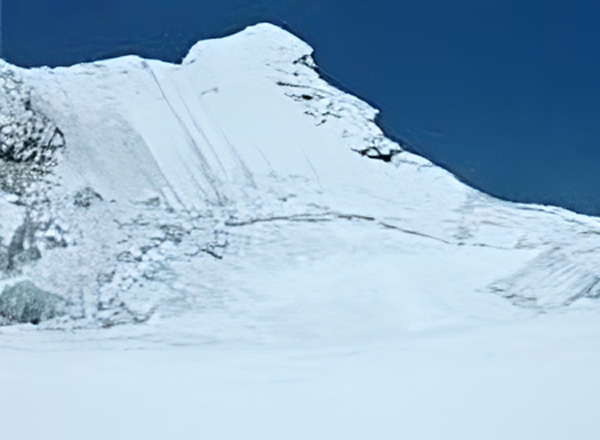Island Peak Climbing – 6189m
Island Peak Climbing – 6189m

Talk With Expert
- +977-1-5591234 / 9851104568
- info@prestigeadventure.com / pdamber@yahoo.com
OVERVIEW
Height (m.) : 6160
Himal : Khumbu Himal
Region : Sagarmatha
Imja Tse peak, at a height of 6,160 meters, is more popularly known by the name of Island Peak. The peak was named Island peak by Eric Shipton’s party in 1953, as the peak resembles an island in a sea of ice when viewed form Dingboche. Later in 1983, the peak was renamed as Imja Tse.
The peak was first ascended in 1953 by a British team as preparation for climbing Everest. Tenzing Norgay was one of the members who successfully ascended it.
The peak is part of the south ridge of Lhotse Shar and the main land forms a semicircle of cliffs that rise to the north of the summits of Nuptse, Lhotse, Middle Peak and Lhotse Shar. Cho Polu and Makalu lie to the east of the Island Peak. Baruntse, Amphu and Ama Dablam lie to the south.
Fee Structure for the Peak
| Group Size | Rate US$ | Additional P/P US$ |
| 1-4 persons | 350.00 only | |
| 5-8 persons | 350.00 plus | 40.00(per person) |
| 9-12 persons | 510.00 plus | 25.00(per person) |
Note: Maximum number of members in team is 12.
ITINERARY
-
Day 1 Arrival in Kathmandu
On a clear day, flying to Kathmandu via Nepal’s northern border is a thrilling and unforgettable experience because you get to see the stunning, expansive panorama of the snow-capped Annapurna mountain range. Your hotel will be escorted to by the Nepali support staff when they receive you at the airport.
-
Day 2 Sightseeing of Kathmandu Valley
Being the historical and cultural center of Nepal, Kathmandu is a favorite travel destination for adventurers, trekkers, and tourists. The city displays a beautiful fusion of Tibetan Buddhism, Hinduism, and Western influence. Its two principal nearby cities, Patan and Bhaktapur, are extremely important in terms of history, culture, and religion. A half-day guided trip will see the well-known and largest Hindu shrine PASUPATHINATH, the town’s largest Buddhist pagoda BOUDHANATH, the palace with 55 windows from the 15th century, and SOYAMBHUNATH. A trip orientation meeting will be held in the evening.
-
Day 3 Fly to Lukla & Trek to Phakding
We arrive at the beginning of our journey in the settlement of Lukla [2850m] after a breath-taking flight and a nerve-wracking landing on a narrow mountain runway. We meet the team and go up the Dudh Kosi Valley on a clearly designated track to Phakding, where we set up camp for the first time.
-
Day 4 Trek to Namche
We use high suspension bridges to cross and recross the river starting in Phakding. The Sagarmatha National Park, which was established to safeguard and conserve this delicate mountain habitat, is accessible after Monjo. After that, we climb pretty steeply to Namche, where, if the sky is clear, we can get our first glimpse of Mt. Everest in the distance. The primary trading center of the Khumbu, Namche, hosts a bustling Saturday market that serves as a meeting spot for Tibetan yak caravans and Hindu traders from the lowlands who have both traversed the glaciated Nangpa La. The Namche Bazar is close to the camp.
-
Day 5 Rest day in Namche
Amidst the massive peaks of the Khumbu, Namche is tucked away between two ridges and offers a multitude of lodges, tea houses, and gift shops in addition to a stunning view. It is the perfect location to take a day off and relax while adjusting to the higher altitude before continuing on to Tengboche. A visit to the Sir Edmund Hillary-founded Khunde Hospital or a one-hour hike up to the Everest View Hotel above Namche for a sunset view of Ama Dablam, Nuptse, Lhotse, and Everest are also viable options for acclimatization walks. The national park center and museum, which is located immediately above the village, also offers attractive views.
-
Day 6 trek to Tengboche
From Namche, the trail curves around the side of the valley, above Dudh Kosi. We now have our first very good views of the great peaks of the Khumbu, including Everest, Lhotse, Nuptse and Ama Dablam. Passing many villages and many tea shops, we descended steeply to the bridge over the river at Phunki Tenga. The village is a great place to have lunch and here we can rest before the steep climb up to Tengboche. Although tiring, walking the winding path has a lot to offer, with rhododendron bushes, beautiful birds and stunning mountain scenery. Tengboche is famous for its legendary monastery, the largest in Khumbu. We camped near the monastery with Everest, Lhotse and Ama Dablam framed in the tent door.
-
Day 7 Trek to Pheriche
After crossing the Imja Khola and descending through a dense forest, we gradually ascend to the town of Pangboche. This offers spectacular views of Ama Dablam [6856m], with the gompa, mani walls, and a few solitary pine trees in the background. We must trek for another two hours to reach Pheriche.
-
Day 8 Rest day in Pheriche
An opportunity to walk up the valley and take in a lake, the Tshola Tsho, and the vertical cliffs of Cholatse and Tawache on a day of rest and acclimatization. As an alternative, we can ascend the ridge above Dingboche to have a better picture of the Imja Valley and the magnificent south face of Lhotse.
-
Day 9 Trek to Lobuche
We continue ascending the broad valley that lies to the left of the majestic peaks of Cholatse and Tawache. Then we make a right turn and ascend more steeply in the direction of the Khumbu Glacier. Before zigzagging up through the rocks of the glacier’s final moraine, stop for lunch at the tea house in Duglha. Numerous stone cairns have been erected at the summit of this climb as monuments to the numerous Sherpas who have lost their lives while scaling Mount Everest. The route then gradually ascends along the glacier until it reaches the settlement of homes at Lobuche.
-
Day 10 Trek to Gorak Shep
The track follows the Khumbu Glacier as it leads to our next destination, Kala Pattar, and provides breathtaking vistas of the mountains in the area, particularly where it must ascend to cross a tributary glacier. At Gorak Shep, where we will be camping for the night, we take a break for lunch. We ascend Kala Pattar [5554m], one of the best overlooks in the Everest region, later in the afternoon when the colors of the setting sun start to show on Everest. We return to our tent at Gorak Shep as the sun sets and get an early night in order to be ready for our climb to Everest Base tent the following day.
-
Day 11 Trek to Everest base camp
As it takes several hours on a trail that winds between ice pinnacles and across the crevasses of the Khumbu Glacier, getting to Everest Base Camp requires getting up extremely early. On the way back, we have the option of taking a higher path to enjoy a breathtaking view of the Khumbu icefall and the path leading to the South Col. To camp for the night, we head back to Gorak Shep or Lobuche.
-
Day 12 Trek to Dingboche
Today, we travel back down to Dingboche, a summer settlement with scattered dwellings in the fields, via Duglha.
-
Day 13 Trek to Chukhung
Today’s easy hike will take us around two hours as we steadily ascent to the hamlet of Chukhung. We have fantastic views of Island Peak and the difficulty that lies ahead along the route.
-
Day 14 Trek to island peak base camp
Another simple day, the trail crosses a river, continues through a valley for almost three hours, and passes by the stunning south face of Lhotse. Base camp is located below steep grassy slopes that signify the beginning of the ascent up Island Peak, by the Imja glacier.
-
Day 15 Trek to high camp
We continue climbing a short distance to high camp, where we will unwind and finalize our last climb-day preparations.
-
Day 16 Ascent of island peak
After crossing the gully above the camp, the trail climbs for a another hour to reach a small ridge that leads directly to the glacier. As the glacier crossing, which is the most intriguing portion of the climb, begins, it is now time to rope up and put on our crampons. Then comes the inclining snow slope up to the top ridge. When we reach the top of this ridge, we enjoy breathtaking up-close views of the south face of Lhotse towering over us and more dramatic mountain views in the opposite direction. We travel to base camp by taking the same path down.
-
Day 17 Spare day
a day set aside as a backup in case of bad weather, etc.
-
Day 18 Trek to Pangboche
We proceed to Dingboche for lunch after descending the trail to Chukhung. The charming village of Pangboche, where we will stay for the night, is another couple of hours away.
-
Day 19 Trek to Namche
Today, we follow the river, bridge it, and then return to Tengboche by ascending through a birch and rhododendron forest. Among the Himalayan giants visible are Kwangde, Tawache, Everest, Nuptse, Lhotse, Ama Dablam, Kantega, and Thamserku. Before returning to Namche, we travel from Tengboche to the Phunki Tenga bridge over the Dudh Kosi, where there are water-powered prayer wheels.
-
Day 20 Trek to Lukla
The Dudh Kosi is followed on our last day of hiking back to Lukla. This final night in the mountains is the perfect time for a goodbye celebration with the Sherpa guides and porters, where we can drink some chang, learn some Sherpa dance, and reflect on an unforgettable trekking adventure.
-
Day 21 Fly to Kathmandu
In order to catch the aircraft back to Kathmandu, we get ready early and head to the airport.
-
Day 22 Depart Kathmandu
We will drive you to the airport so you may catch your journey home with our Nepalese support staff. (Alternatively, stay longer for short excursions like a game drive in a national park, rafting, Tibet tours, or mountain biking, for example).

